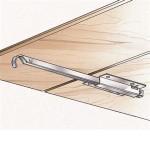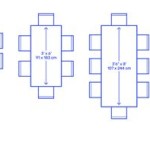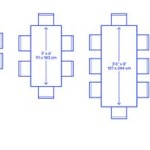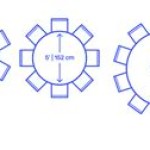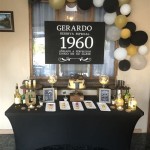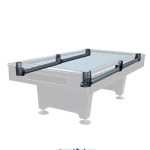Table Settings for Breakfast, Lunch, and Dinner
A well-set table enhances the dining experience, elevating a simple meal to a more refined and enjoyable occasion. Whether it's a casual breakfast with family or a formal dinner party, understanding the proper table settings for different meal types can add a touch of elegance and sophistication. This article will guide you through the essentials of table settings for breakfast, lunch, and dinner, exploring the different pieces of cutlery, glassware, and linens used for each occasion.
Breakfast Table Setting
Breakfast settings are generally simpler than those for lunch or dinner. The key elements include:
- Placemat or Tablecloth: Choose a placemat or tablecloth in a color or pattern that complements your breakfast dishes. Opt for materials like linen, cotton, or vinyl for durability and easy cleaning.
- Dinner Plate: A medium-sized dinner plate serves as the foundation for the meal. It should be large enough to accommodate your breakfast fare, such as pancakes, eggs, and toast.
- Fork: A dinner fork is typically used for breakfast, placed to the left of the plate with the tines facing up.
- Knife: If you're serving items that require cutting, like a breakfast sandwich or pastries, place a butter knife to the right of the plate with the blade facing the plate.
- Spoon: A teaspoon is sometimes included for yogurt, cereal, or fruit, placed to the right of the knife.
- Glass: A juice glass or water glass should be placed above the knife, slightly to the right.
- Napkin: A napkin is placed to the left of the fork or on the plate.
Lunch Table Setting
Lunch table settings are slightly more elaborate than those for breakfast. These settings typically include:
- Placemat or Tablecloth: Opt for a more formal placemat or tablecloth in a neutral color or pattern that complements your lunch dishes.
- Dinner Plate: A dinner plate is used as the base for the meal. It should be sized appropriately for the lunch courses.
- Salad Plate: A smaller salad plate is often placed atop the dinner plate, especially if a salad is served as a separate course.
- Fork: A dinner fork is placed to the left of the plate, followed by a salad fork placed to the left of the dinner fork.
- Knife: A dinner knife is placed to the right of the plate, followed by a butter knife placed above the knife.
- Spoon: A soup spoon may be included if soup is served as a course, placed to the right of the knife.
- Glass: A water glass is typically placed above the knife, slightly to the right. You may also add a wine glass for alcoholic beverages.
- Napkin: A napkin is placed to the left of the fork or on the plate.
Dinner Table Setting
Dinner table settings showcase the most formal arrangement. These settings include:
- Placemat or Tablecloth: A tablecloth is often considered more appropriate for formal dinners than a placemat. Choose a fabric like linen or cotton that complements the theme of the occasion.
- Dinner Plate: A dinner plate serves as the base for the meal.
- Bread Plate: A smaller bread plate is placed to the left of the dinner plate for bread or rolls.
- Fork: A dinner fork is placed to the left of the plate, followed by a salad fork placed to the left of the dinner fork, and possibly a fish fork if seafood is served.
- Knife: A dinner knife is placed to the right of the plate, followed by a butter knife placed above the knife and a fish knife if necessary.
- Spoon: A soup spoon is placed to the right of the knife, followed by a teaspoon for desserts or coffee.
- Glassware: A water glass is placed above the knife, slightly to the right. A wine glass can be placed to the right of the water glass for red wine, and a separate glass, typically a stemmed glass, can be added for white wine.
- Napkin: A napkin is placed to the left of the fork or on the plate.
Beyond the basic elements listed above, you can add additional items to your table setting based on the specific menu and the formality of the event. For example, you might include a small dessert fork and spoon if dessert is being served, or a coffee cup with a saucer if you are serving coffee after dinner.
When setting the table, remember to maintain a consistent distance between the different items. This creates a visually appealing and balanced presentation. The spacing should be approximately 1 inch between each plate and silverware.
Finally, don't forget to consider the overall aesthetic of your table setting. Choose colors and patterns that complement your dishes, glassware, and linens. You can also add centerpieces and candles to enhance the ambiance and make your table setting truly special.

Table Setting Guide Trimark Adams Burch

Arrangement Of Cutlery One Those Things You Realize Re Not Absolutely Positive About Whether Breakfast Table Setting Dining Etiquette

Handling Your Own Table Settings Follow Proper Etiquette Dining Setting

Dinner Table Setup Styles Breakfast Setting Dining Etiquette Brunch

Best Known Method Of The Lunch Dinner Table Setting Manners

Pin By La Laa On Cute Dining Etiquette Dinner Table Setting

How To Set The Table For Every Meal One Brass Fox Powered By Chloédigital

Table Service Rue Now Lunch Settings Formal Setting

Table Etiquette Martin S Famous Potato Rolls And Bread
Place Setting Diagrams At Replacements Ltd
Related Posts

